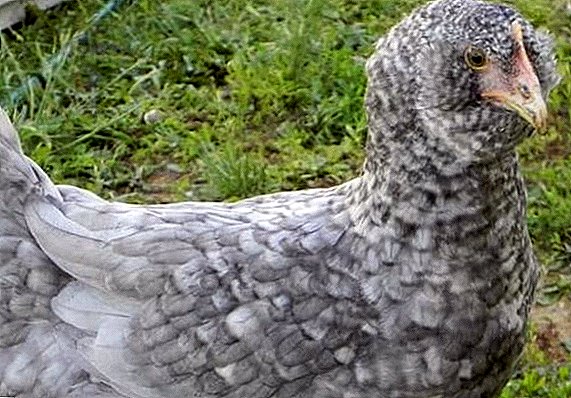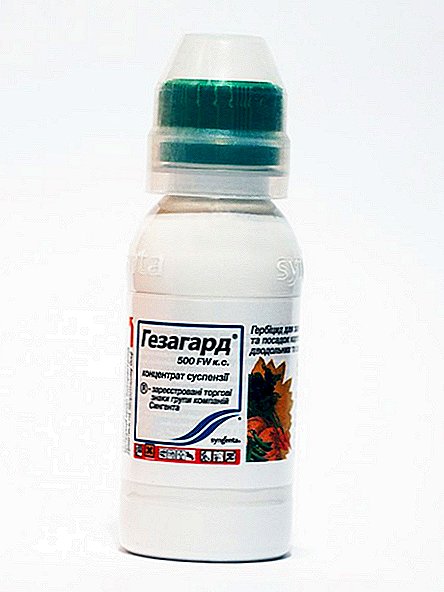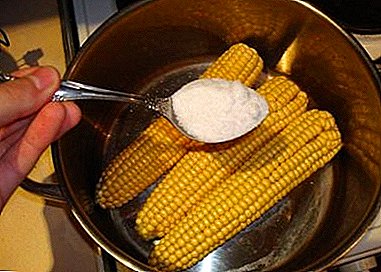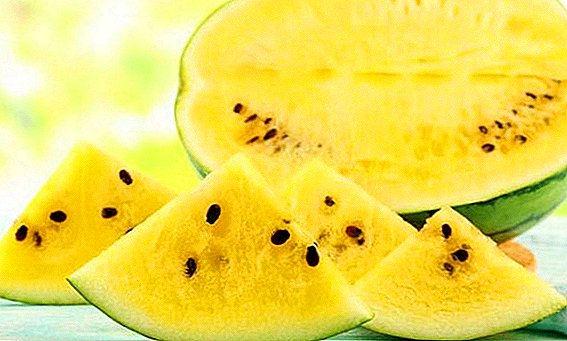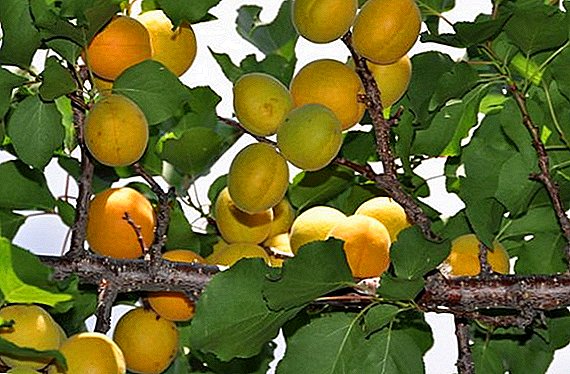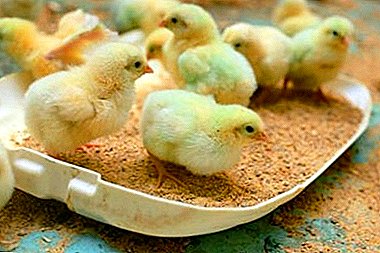
Breeding chickens is a fairly profitable business, albeit a very expensive one. Small chicks require increased attention in terms of nutrition.
It is important to choose food that will be rich in all the trace elements and vitamins for successful growth and weight gain. Read more about proper feeding of young chicken in our article.
Feeding: daily ration tables
You can just scatter it on the floor so that the chicks can peck at it. On the first day the chicks are urgently needed water. It is best to use 3-5% glucose, which is a powerful source of energy. It would be nice to add vitamin C (10 g of substance for 10 liters of water). Learn more about growing day-old chicks here.
Table 1 - Daily ration for feeding chicks (g per 1 head)
| Diet | Chick age, days | ||||||
| 1-3 | 4-10 | 11-20 | 21-30 | 31-40 | 41-50 | 51-60 | |
| Boiled egg | 2 | 2 | - | - | - | - | - |
| Skim milk | 5 | 8 | 15 | 20 | 35 | 25 | 25 |
| Skim cheese | 1 | 1,5 | 2 | 3 | 4 | 4 | 5 |
| Corn, barley, millet | 5 | 9 | 13 | 22 | 32 | 39 | 48 |
| Fish or meat and bone meal | - | - | 1 | 1,4 | 2,8 | 3,5 | 4 |
| Cake, cake | - | 0,2 | 0,5 | 0,6 | 1,2 | 1,5 | 2 |
| Greenery | 1 | 3 | 7 | 10 | 13 | 15 | 18 |
| Boiled potatoes | - | - | 4 | 10 | 20 | 30 | 40 |
| Mineral feed | - | 0,4 | 0,7 | 1 | 2 | 2 | 2 |
| Salt | - | - | - | - | - | 0,1 | 0,2 |
Table 2 - The daily intake of feed, depending on age
| Chickens age in weeks | Daily dosage in g per individual |
| 1 | 10-20 |
| 2 | 20-40 |
| 3 | 40-60 |
| 4 | 60-80 |
Types of mixtures
TIP: Today, every farmer can feed chickens with two types of feed - homemade or ready. Each of them has its advantages. If you choose a ready-made feed, then there is no need to spend time on its preparation.
You just need to put it in the trough. But homemade food you need to cook with your own hands, wasting time on the preparation of suitable components. Here you need to know which ingredients are beneficial for a growing body at a certain age.
The advantages of homemade food should be attributed:
- ability to control the composition;
- no harmful components;
- naturalness
There are negative points:
- the high price of feed, since not always all the components are on hand;
- laboriously, because you need to first prepare all the ingredients, and then knead them;
- store mash can be no longer than 3-4 days.
Despite this, it is often the homemade version that is chosen most often. It is just that manufacturers do not always use a complete set of vitamins and microelements, which is written on the package. Because of this, young animals do not receive them, which is fraught with developmental delays, diseases and even death.
Ready mixers: names of popular compositions, their dosage, price
Is it possible to give and how?
Purchased feed allowed for young stock from 10 days of age. But this does not mean that you need to give feed all day. Introduce it into the diet gradually.
"Sun"

This is a complete feed, which contains all the necessary components for the full development of chickens. It is possible to apply feed not only for chickens, but also goslings, ducklings from a very young age. The composition of products includes the following components:
- vegetable protein;
- salt;
- amino acids;
- calcium;
- phosphorus;
- iron;
- copper;
- zinc;
- manganese;
- cobalt;
- iodine;
- vitamins of group B, A, D, C.
After applying the feed, the young growth is actively growing. Compound feed Sun, according to farmers, quickly and easily absorbed even the smallest chicks. As part of no dyes and preservatives, antibiotics and other harmful components. The daily dosage is 10-25 g per individual.
Watch the video about the feed "Sun" for chickens:
"Start"

This feed allowed to give the chicks in the first 2 weeks of life. The composition includes the following components:
- corn;
- peas;
- wheat;
- barley.
The main component is finely ground corn. It has a positive effect on the formation of the skeleton, as it increases muscle mass and improves the functioning of the stomach. On one individual enough 10-27 g of feed.
"Growth"

As soon as the chicks are 2 weeks old, you can add to their diet feed. Its composition is chosen so as to increase the muscle mass of the young. The peculiarity of this feed is that it contributes to a more rapid absorption of food, as presented in the form of large granules.
The composition contains such components:
- corn;
- protein;
- vitamins and trace elements;
- amino acids;
- specific components.
Giving feed Growth of 90-120 g per individual. The first 5 days to feed 5-6 times a day, and from 6 to 14 days - 3-4 times. Then you can go to 3 meals a day. About feeding chickens from a month and older can be found here.
"Purina"

This is a balanced combination of components for feeding chickens that are raised under farm conditions. Thanks to this feeding broilers gain weight in the near future. Purina's natural compound feed contains all the components for the full growth of young stock that is in closed or open housing.
Full growth of chicks is achieved through full digestion of feed, obtaining the required amount of energy and minerals for normal development. The composition also contains probiotics and essential oils to maintain immunity and resistance to disease. Give the feed on 10-14 g per individual.
Cooking yourself at home: recipes, consumption rates
The basis of homemade feed for chickens laid corn. It will occupy ½ of the volume of the mash. The following components are necessary to produce 1 kg of feed.:
- corn - 50 g;
- wheat - 160 g;
- cake - 140 g;
- fat-free kefir - 80 g
Crush all ingredients and then pour over yogurt. Preparing food for only 3 days.
What is the feed frequency?
Chicks up to 10 days to feed 6-8 times a day. And monthly chickens are fed 3 times a day.
IMPORTANT: If you find that a chick with an empty goiter, then sow it and feed it separately.
Supplements as they grow into chicks
What is useful for two months young?
In the mash 2-month chicks, you can add such components:
- corn;
- wheat;
- sunflower seeds in the form of cake.
 As an additional feeding allowed crushed crackers. But the cottage cheese and whey can be excluded from the diet. It is useful to feed young stock with garden worms, duckweed or snails. They should be given separately from the mash.
As an additional feeding allowed crushed crackers. But the cottage cheese and whey can be excluded from the diet. It is useful to feed young stock with garden worms, duckweed or snails. They should be given separately from the mash.
Not recommended to feed young growths with whole grains of corn and wheat, as they are much worse assimilated than ground ones.
In small amounts, you can give meat and bone meal or fish meal to chickens. Garden and kitchen waste is allowed, but only if there are no signs of mold.
Meals from the age of 3 months.
From this age, green food in chicks should be 30-40% of the total daily diet. In winter, grass should be replaced with hay or dried greens. An excellent option would be dried granulated nettle. For 3-month-old chicks, there is an approximate diet:
- croup and grain - 35 g;
- potatoes - 30 g;
- skim milk - 25 g;
- greens - 15-20 g;
- meat and bone meal or fish meal - 3-3.5 g;
- meal, cake - 2 g;
- mineral supplements - 2 g;
- vitamins.
Dry placer for egg breeds
Dry feed for chickens of egg breeds. It contains all the nutrients necessary for the rapid development of chickens and their maturation for the wearing of eggs. Sold dry food in the form of cereals or placers.
The daily rate is not more than 60 g. You just need to scatter it on the ground, and the chicks themselves will already peck up grains. Since the chickens will be in motion, this will avoid their obesity in the future.
A full-fledged diet for chickens is a guarantee of their rapid growth and development, and it is also an excellent preventive measure against various diseases. All feed must be balanced and contain at most all useful components. But overfeeding youngsters is not worth it, otherwise it will lead to their obesity, because of which already adults will not be able to lay eggs.


